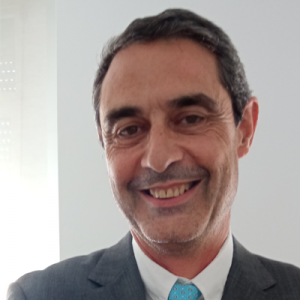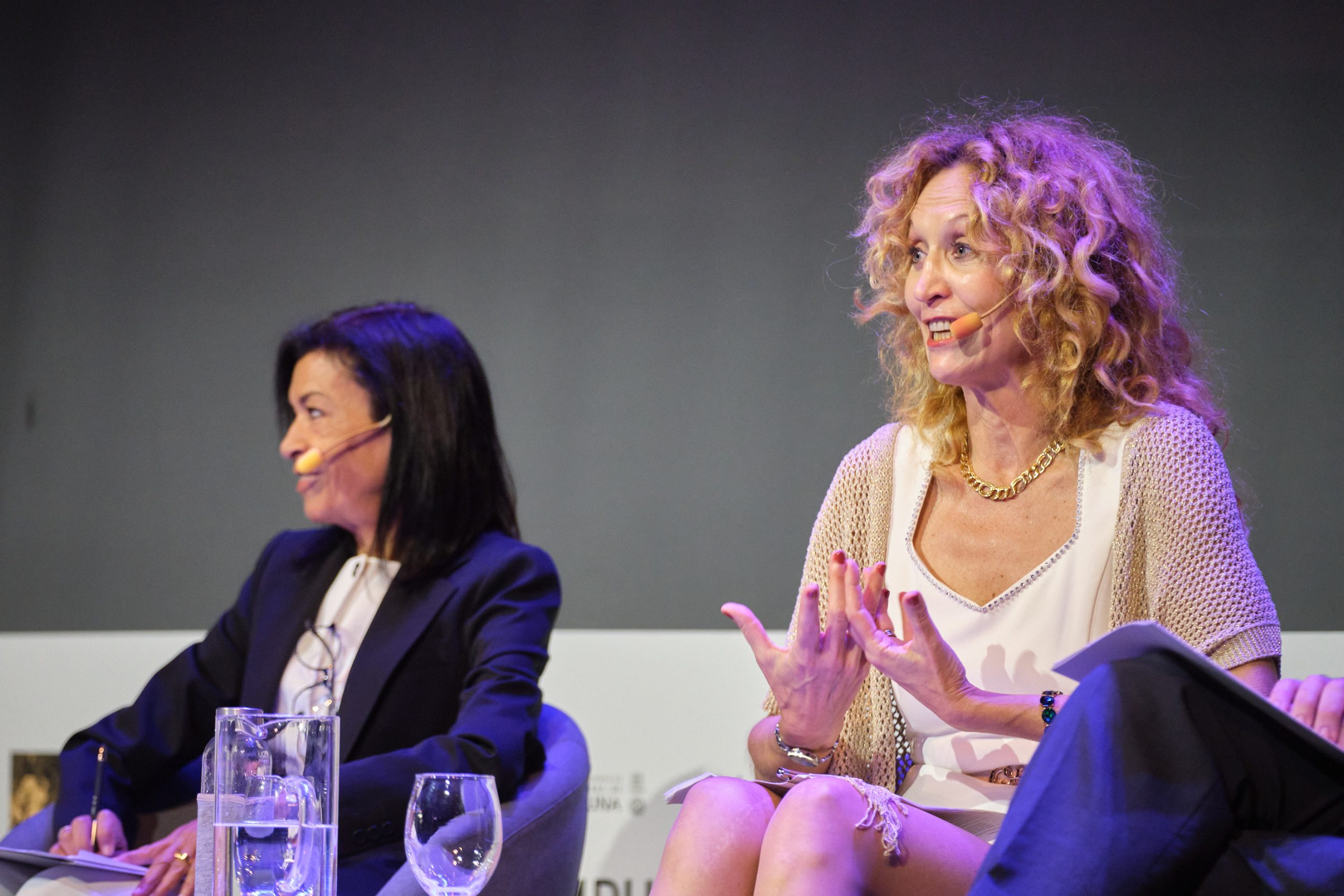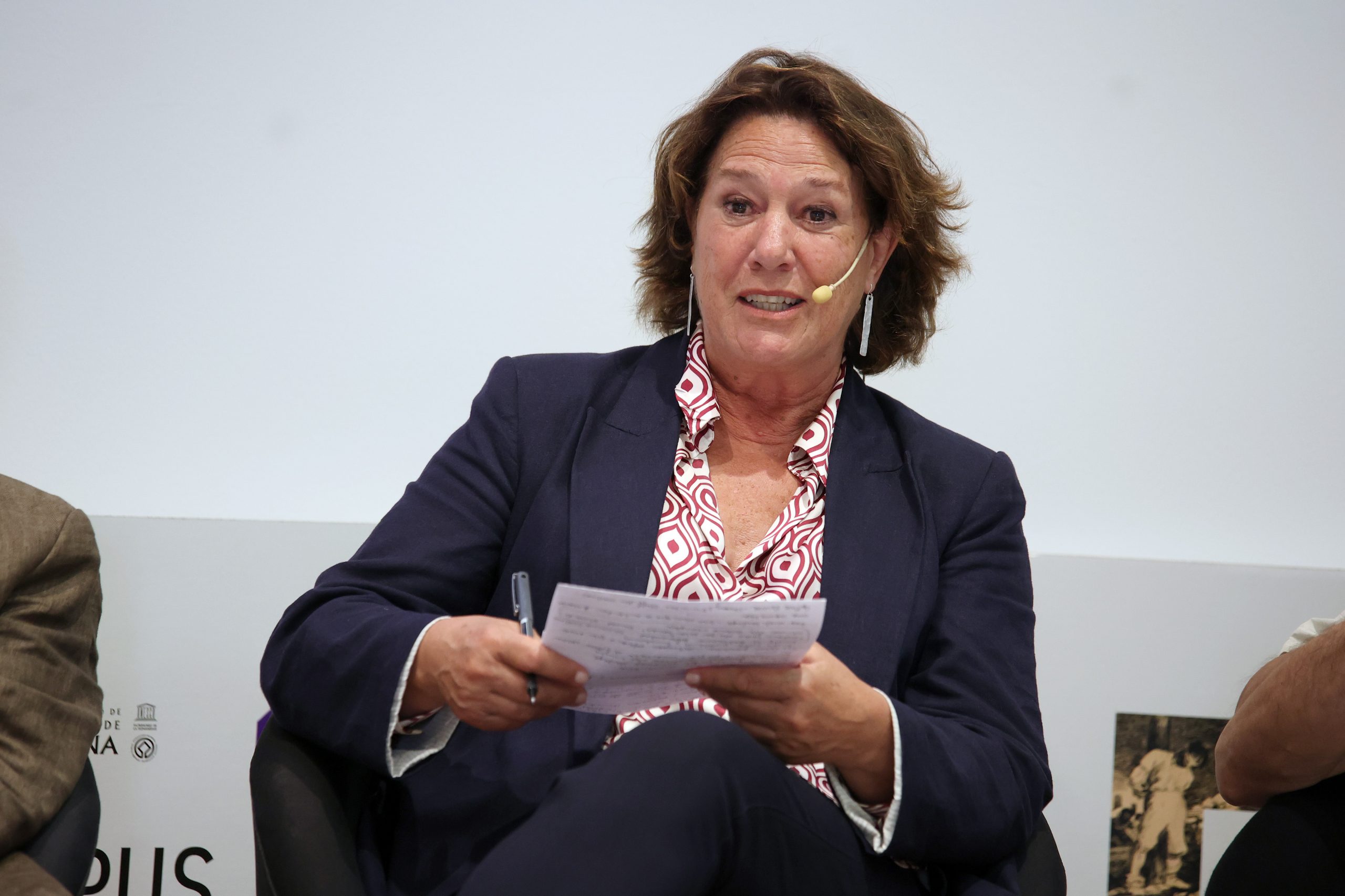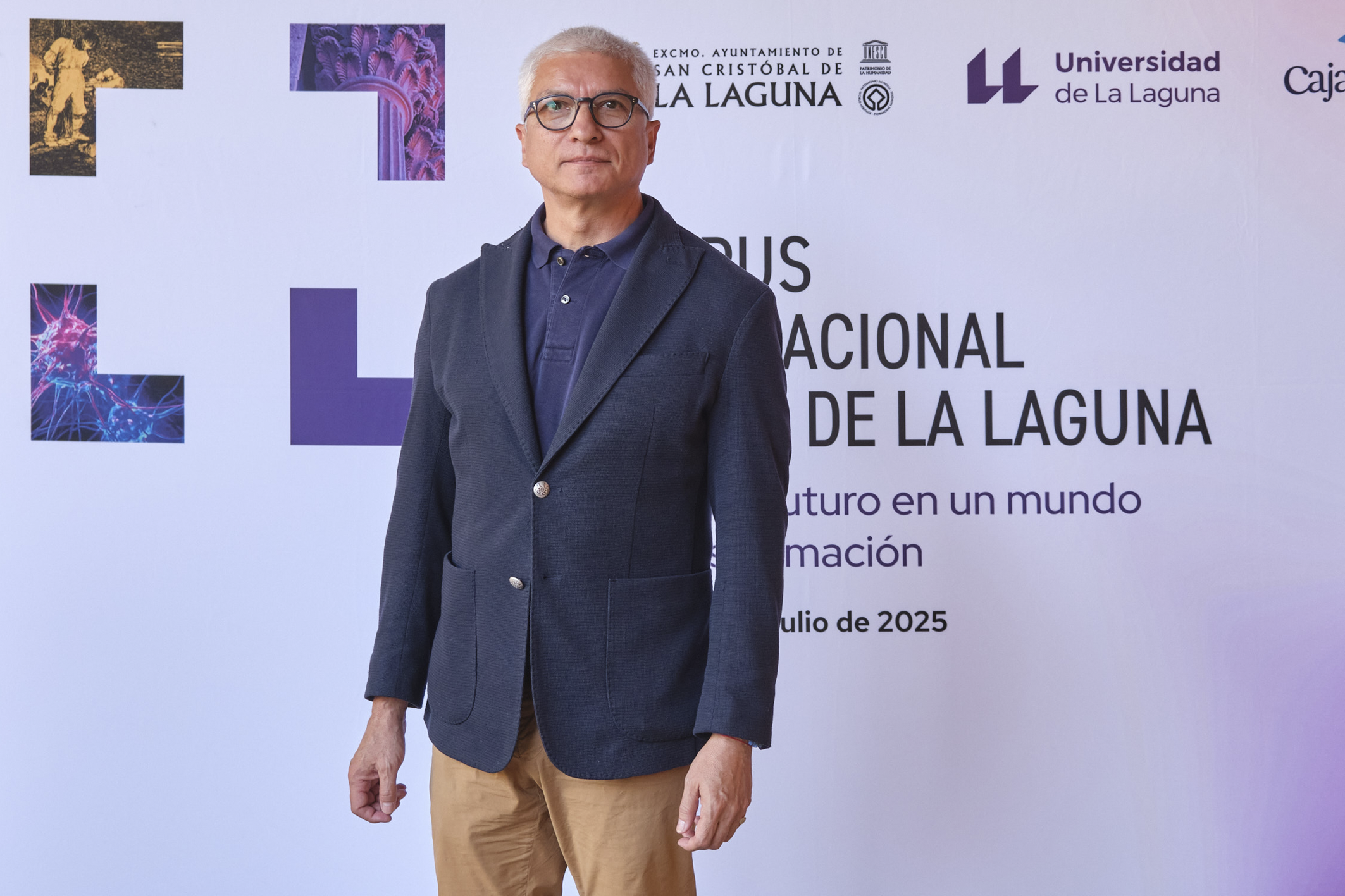Interview with Albe Rto Domínguez Martínez by Nira Llarena, press editor and creative.
Rto Domínguez Martínez by Nira Llarena, press editor and creative.
As Alberto Domínguez Martínez says in this interview, "Neuroscience is fashionable." He does not lack reason, and this increase in interest in our brain is due, without a doubt, people like him, who are able to disseminate deeply complex issues closely and entertaining. A conversation that threatened to be very technical and that, however, had the taste of a desktop. Professor of Basic Psychology and Director of the University Institute of Neuroscience of the University of La Laguna (Iune), Alberto has been studying how our mind works, how we process language and what happens in our brain when we speak, remember or even when we get sick.
The conversation that follows is a route through topics of great current affairs - from applied artificial intelligence, to the so -called neurode rights - and a sample of the value that science projects that are made from here have.
You are professor of psychology and have specialized in cognitive language neuroscience. I deduce that in the University Institute of Neuroscience (Iune) very diverse branches of branches are gathered, is that so?
Yes, no doubt. In the Institute we have about fifty researchers who are full members. Each one has their research line and, also, are professors at the University of La Laguna. In parallel there are many others, in the same or higher number, which are associated members. And their professional fields are very diverse: there are staff at the University Hospital of the Canary Islands and the Candelaria Hospital, neurologists from private centers or researchers from numerous academic fields. We gathered a very large variety of researchers because, although it is a neuroscience institute in general, it has a certain bias towards cognitive neuroscience. For example, there are many psychologists within the institute, but we also have physiologists, biologists or professors of the Faculty of Medicine who work at the most experimental levels of the neuronal level.
This interdisciplinarity imagined that it will result in very interesting and valuable projects, can any?
Yes, collaboration is one of our great strengths. There are many projects underway. An important part of the work focuses on the study of brain activity and how certain neuronal circuits work. For example, there are lines that investigate disorders such as OCD, and recently a project on brain magnetic stimulation has been launched in schizophrenia, which also has the participation of educational psychologists and is funded by the Cabildo de Tenerife.
There are also research on Parkinson, such as the one leading Pedro Barroso, focused on dopaminergic neurons. And others more focused on neuropsychology, such as the study by Naira Delgado, which analyzes empathy processes in health professionals and how they affect them day by day with the suffering of patients.
In the field of neuroimaging, we have Niels Janssen, a magnetic resonance expert who works to identify with great precision the different regions of the hippocampus. And in the Engineering area, Ernesto Pereda is developing research with electroencephalograms, exploring algorithms to locate brain functions from those records.
In short, they are very diverse lines that reflect both the interests of those who investigate and the financing possibilities that we are getting.
The Institute brings together psychologists, physiologists,
biologists and doctors who investigate
the brain together from different perspectives,
which generates innovative projects
in cognitive neuroscience.
I know that they have worked with artificial intelligence to diagnose mental disorders. How can IA change the way we understand and treat the human mind?
Artificial intelligence and Machine Learning have been using research for some time, but now their use is intensifying because they allow analyzing much more information simultaneously. Before, the experiments were studied isolated variables to see how they affected brain activity, but now, with the computing capacity of computers and algorithms can process multiple data at the same time, which opens a lot of possibilities.
For example, in a project we are analyzing characteristics of voice and speech to classify neurodegenerative diseases such as Alzheimer, Parkinson or multiple sclerosis, only from a recording. The idea is that, in the future, a mass screening could be made, even by phone, to detect early indications of these diseases just by listening to how a person speaks.
There are data that already tell us that this could be achieved. For example, an interesting marker we use for Alzheimer's is the "semantic granularity", which measures whether the terms that the patient uses to name objects are precise or too general. For example, instead of saying "dog", someone with Alzheimer could say "animal" or "bug." These types of patterns are automatically detected with Machine Learning analyzing patient stories.
In short, these technologies have great potential to improve early diagnosis not only in neurodegenerative diseases, but also in mental disorders and other areas.
How do you value the role of Iune within the research possibilities in the Canary Islands? That is, the growth of the institute has facilitated that there are more young people in the Canary Islands forming in neuroscience?
Neuroscience is a very fashionable issue, but our merit is not to create that interest, but to offer a platform for Canarian students and other parties to really develop in this field. Here we give them training, doctoral options and the opportunity to do your thesis with the Institute's research teams. We have many preoctoral students and we constantly disseminate; For example, educational institutes visit us in open doors, and there are always students who are attracted to neuroscience. And it does not surprise me, it is a very striking area for those who study psychology, biomedicine or biology, and represents a very attractive professional exit.
Our goal, as in any research institute, is to attract and retain talent. Although some researchers are going to work outside, we have also managed to attract international students, such as several Chinese doctors who have done their thesis here and are now professors in important universities in their country, such as the University of Shanghai or Dalian. We have also had students from Chile, Argentina and many postdoctorals working with us; Right now we have, for example, a researcher who has gone through prestigious centers such as Cambridge or the BCBL in Spain.
The road map for a Canarian student who wants to devote himself to neuroscience is to train with us, making a master's degree and then a doctorate. And then get predictory contracts that can obtain financing from the Government of the Canary Islands. For example, one of our doctoral ones is doing a stay at the University of Bologna and then must make a postdoctorate out, but our intention is that, when I am a consolidated researcher, he can join the institute again. Of course, all this depends on having the necessary funds, that is something that we will not tire of asking.
The brain functions as an interconnected network,
not as isolated compartments.
I can't help asking what is now known about the human brain that a few years ago was almost a dogma and, with the latest research, it has changed perspective.
In neuroscience there are many myths, such as the typical use of "10% of the brain", but one that seems especially relevant to me and has changed over time is the idea that each brain function is located in a specific and insulated area. For example, we know that areas like Broca or Wernicke are key to language, but today we understand that speaking or understanding a word active a large network of regions in the brain, not only those specific areas.
When you say "red ball", visual areas for color and shape are activated, but also motor areas related to movement. The whole brain functions as interconnected circuits, not isolated compartments. This is reflected even in everyday situations, such as a football coach who moves his leg while he sees his players, activating those motor areas. A neurologist at the beginning of the century said that "the cells that are activated together, remain together", which means that the connections between neurons are reinforced when they work simultaneously, integrating different aspects of the same experience so that we perceive it as one thing, such as "red ball." This approach is closely related to Embodiment theory, or locking, which argues that to understand something you also need to represent how your body interacts with that. That is, understanding is not only an isolated brain issue, but implies integration with body experience.
Therefore, the idea of the "grandmother's neuron" - a unique neuron that stores the image of someone - is a myth: brain representation is distributed and covers many experiences and memories. Projects such as the Brain Project in the United States or European initiatives have advanced a lot in mapping the brain at the microcellular level, in the style of the human genome project, identifying all types of neurons. But the crucial thing is not only to know the biology or biochemistry of neurons, but to understand their relationship with cognitive functions, emotions and human experience.
There is a concept that I have known preparing this interview: "Neurode rights." Could you tell us a little about this topic?
Well, it is a relatively new concept. In this international campus we will have Jesús Mercader, a law professor at Carlos III University, who is a true specialist in the subject. If I am sincere, I think nobody is still clear what they imply, among other things because the current scope of neuroscience is still limited. Legislate about something that we still do not understand at all, nor do we know how far it will arrive in 10 or 20 years, it is very complex. Even so, steps are being taken. The only country that has legislated in this regard is Chile, which in this area takes us the lead. It is important that other countries also begin to prepare, because if in the future the brain activity is intervened or modulated, or even to read thoughts, the ethical and legal impact will be enormous. It would be something that could put in check fundamental principles of civilization.
Luckily, there are efforts in progress. Following the pandemic, the Spanish Parliament created the C office - a scientific advice office - which has produced several reports, two of them on neuroscience: one focused on practical and ethical aspects, and another on neurodegenerative diseases and aging. They are very valuable documents, prepared by experts such as Rafael Yuste, who will also give the closing conference of these days. Indeed, although the issue of neurodeings is still under construction, it is a key issue in the future.
Chile is the only
country that has legislated on
neurode rights, a concept still
under construction that could change
the future of mental privacy and
brain protection.
Then there is the theme of technologies, for example, machines for neuronal stimulation. To what extent can this become a risk?
Yes, the field is growing a lot, but the great challenge is that technologies constantly change. It is those technologies that allow us to access brain data. In our laboratory, for example, we make records of electroencephalography every day in students and patients. Always under informed consent and confidentiality protocols. But the truth is that anyone who has the right equipment can record and store neuronal data, and that raises a dilemma: what will happen when, in the future, we can interpret that data in forms that we do not even imagine today? Imagine that we could predict if a person will develop a neurological disease. That is valuable information not only for medicine, but also for insurers or companies, which could refuse insurance or employment based on that prediction. It would be very dangerous. And we are not talking only about extracting data from the brain, but also of intervening in it. With brain stimulation, for example, we introduce variables directly into neuronal activity.
There are also BCI (Brain Computer Interfaces) devices, which allow direct communication between the brain and a machine. They are an incredible opportunity - a person with paralysis that can move a robotic prosthesis with thought - but also open the door to possible perverse uses.
I try to be optimistic. Despite the risks, I think that as humanity we have demonstrated the ability to contain dangerous technologies. Hopefully with neuroscience we know how to set limits and use these advances for what really matters, which is to cure diseases, improve mental health and well -being. That is why it is urgent to establish regulatory frameworks. Today, brain stimulation in private clinics is being applied without clear legislation. The FDA in the US has only approved its use in cases of treatment resistant depression, and in Europe there is still no firm regulation.
A way to cultivate this optimism is to feed shared knowledge, what will people find in this campus in the neuroscience axis?
All the people who participate have an interesting profile. For example, Rafael Yuste, who will give the closing conference, is a first -level neuroscientist at Columbia University and a great disseminator. There will also be Jesús Mercader, a law professor at the Carlos III University, who will talk about the neurodechos we commented before. Katya Rubia, an expert in ADHD and hyperactivity from a brain approach, which comes from the King's College and a CSIC researcher who will talk to us about neurotechnologies, is also added.
And then there is a round table that interests us especially, coordinated by Ernesto Pereda, our reference engineer in the Iune. It will moderate a conversation with three neuroscientists of the institute: Raquel Marín, neurophysiologist; Naira Delgado, expert in social psychology; and María Ángeles Alonso, who investigates the memory processes.
So, for the part that touches us, the program seems to us first level. In addition, I want to highlight the value that institutions such as the City Council of La Laguna and the CajaCanarias Foundation are committed to a summer university with this quality. In many other cities summer universities are consolidated as spaces for dissemination and cultural attraction. And La Laguna, with its historical and patrimonial wealth, also deserved to have such an offer, which can also become an important attraction of scientific and informative tourism. So I sincerely celebrated it.












